- Biology M.Sc.
- Norway, Trondheim
- St. Olavs Hospital, Trondhiem
- 06/2023 – 11/2023
Before the stay (planning, visa, vaccinations, travel, …):
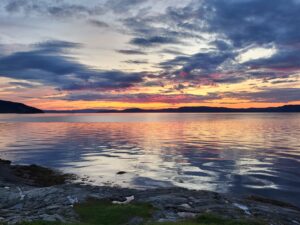
© Leona Grundel
I started an internship at St. Olavs hospital in Trondheim, which is the university hospital of NTNU,
after already spending the summer semester at NTNU. I therefore had arrived in January already
and had therefore already spend a long winter and beautiful spring their.
Regarding finding accommodation in Trondheim, the student welfare organization SIT organizes
student housing for incoming Erasmus people. Those accommodations are generally cheaper
(while I was there around 4500 NOK) than rooms on the private market (generally between 5500-
7500 NOK).
If you plan on spending the spring semester in Trondheim, your chances are good to get a place
with SIT. If you are not a student, you would have to find something on the private market, which
unfortunately usually just offers 12-months leases (July to July), few 6-months leases (July to
January; January-June) and almost never shorter leases.
Arriving in the fall semester is more difficult. Spots are very limited, and you may want to check
out the private marked. But if you like the adrenaline rush and the suspense, you can also wait
until just two weeks before you are supposed to arrive in Trondheim. I know of some people that
still got a spot with SIT this close to their departure date. NTNU and SIT are a bit last minute that
way. But speaking from experience, not everyone gets a place with SIT in fall semester.
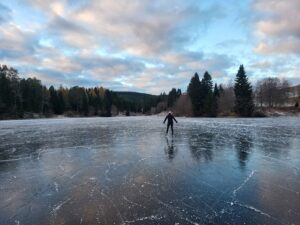
© Leona Grundel
Unfortunately, the private market housing situation in fall is not ideal either as explained above.
Also, if you extent after having started your semester abroad, be ware that, at least for an
extension into the fall semester, SIT is not guaranteeing you a place to stay. There priority is to
make space for the newly arriving exchange students which do not have the chance to go room
hunting on site.
With all the hustling around finding housing and doing all the Erasmus paperwork, the departure
time arrives quickly. Especially when arriving in summer I recommend planning a longer trip on
your way up north and visit Norway west coast or checking out Denmark and Sweden. You could
do the same if you arrive in winter but its much less fun. It’s going to be dark 80 % of the time
anyways, although I have to admit, that snowy Norway looks breathtaking.
I decided to drive up the 21 h to Trondheim with my car because I wanted to have the opportunity
to spontaneously go on road trips and other places. Although Norway in the middle of winter is
icy and snowy, the ‘’highway’’ E6 is usually ok to be driven. But it is a one lane street leading over,
around and through mountains, so in case of fresh snow you might have to wait a bit until the
streets are cleared. However, it was still cold and sometimes we drove for hours without seeing
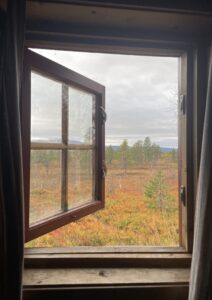
© Leona Grundel
car, while it was down to -18°C outside.
Having a car in Trondheim was especially useful since I did not have to rely on others or the public
transport to go on road trips or cabins that were further away, but you can do a lot of stuff without
one as well. Public transport in the city area is really good, and if you plan ahead you can also
reach places in the periphery a couple hour away (Just make sure to check the time table
beforehand, some bus lines drive sparsely on Sundays). And even if you want to go somewhere
where there is no good public transport connection, there are tones of Facebook groups in which
you will find yourself new friends that have cars:D Speaking of Facebook: You’ll need it.
Everything relies on Facebook: Every restaurant or club as a Facebook page (or Instagram
account) and NTNUI groups (NTNUs sports group, of which there is every sport you can imagine)
communicate and inform through it. Also, you’ll need an empty phones storage when coming
here. There are apps required for everything – laundry, NTNUI sports groups, for identification,
public transport, your student ID, renting cars…
Experience in the host country (accommodation, daily life, free time, …):
Trondheim is a bit like Aachen – a moderately sized student city with great surrounding nature.
Living in Moholt, one of the main student villages (‘’studentby’’), was awesome. This is where the
biggest chunk of Erasmus people lives. It is therefore the center of the Erasmus life. You can
spontaneously meet up in someone’s apartment (if the roomies are ok with it of course) and spend
a fun night hanging out, cooking together or drinking. But be ware, stores don’t sell alcohol after
8 pm on weekdays and 6 pm on weekends.
Next to a washing room, there are also a grocery store, a library, a café/restaurant, a gym and
even a hairdresser on the premises. Without leaving the student city you can do a BBQ, play
beach volleyball, or hang out at ‘’Lofted’’ (the common room) to play table tennis, play board
games or study (they have free coffee!).
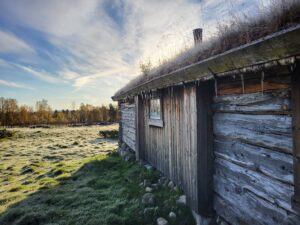
© Leona Grundel
On more thing that I really appreciate are the student run rental organizations. Check out what
the university offers, since some of these can also be used/accessed by non-students. ‘’Restore’’,
for example, is located in Moholt studentby. They collect and hand out donated furniture and
equipment to students for free. If you get one of the limited spots on their opening days you can
get everything from stools and desks to bed covers to plates and cutlery to bikes and what not.
At the end of your stay, you can easily bring that stuff back so that future exchange student benefit
from them.
Furthermore, “Bumerang” is located in Moholt studentby. They rent out everything you may need
for the outdoors for free, from tents to skies & snowboards to ice skates to fishing rods. The same
goes for the non-profit organization ‘’BUA’’. In winter, lakes are usually frozen so you can
spontaneously go ice skating there and the fjord is perfect to try out fishing or just spend the long
midsummer nights there with good food and some friends.
Continuing with the student run organizations, the “Koiene” group allows NTNUI members to rent
out their cabins in Trøndelag. Their cabins are super basic, no electricity or running water, but it
is a great way to spend a weekend away and out in nature with your friends. Here are some
pictures so you can see how beautiful it is out there. Also in fall and winter, some cabins are
perfectly located far away from any light pollution to stay up late and, with a bit of luck, see
northern lights.
Experience at the host institution (professional, cultural, …):
The internship that I did was actually my Master’s Thesis. I therefore spend most of my time at
Campus Øya in the laboratory of St. Olavs hospital. I really recommend working in their
laboratories if possible since their laboratory equipment is modern. I learned a lot, not just
academically but also about differences in how institutions are run. Be aware that there are
differences in formalities and expectations. For me it was difficult in the beginning to figure out
what requirements needed to be met. Although I tried to communicate a lot, there were still some
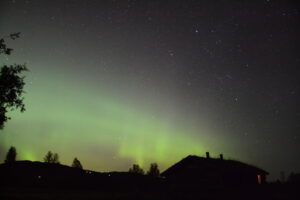
© Leona Grundel
misguided expectations on both sides that needed to be overcome on the way.
Furthermore, it was very interesting to talk to my colleagues with different backgrounds and to
find out about the academic structures in Norwegian research institutions, as well as the working
mentality. They really leave the office at 4 pm on the dot!
I also took a Norwegian language course. Even though you might not need the language
afterwards, it was nice to get a short introduction into the language. Especially for German
speakers it is not that hard. As a plus, you’ll also be able to understand a bit of Swedish or Danish
since their languages are closely related.
Tips for interested students:
I don’t have many more tips other than the ones I have already mentioned: Be aware of the
housing situation for the winter semester; be conscious about what it means to move somewhere
that is dark and cold most of the year; and just try to experience as much as possible. Also, for
when you arrive at NTNU, I can only encourage you to join different groups at NTNUI and maybe
try out something new. As mentioned, they have virtually everything. Normal stuff like, handball,
Taekwondo and rugby, but also fencing, diving, disc golf, dog training, horseback riding and
climbing. I for example picked up sailing and kayaking which was awesome. After the (kinda
costly) 3-days beginners course you are allowed to go to their weekly trainings for free. All of
these activities, as well as many cabin trips and meeting friends help you a lot with making it
through the dark winter hours.


Leave a Reply